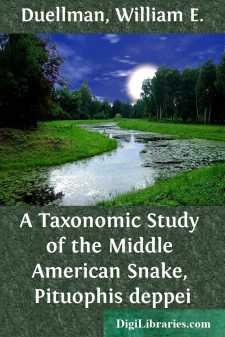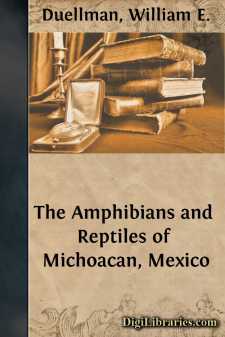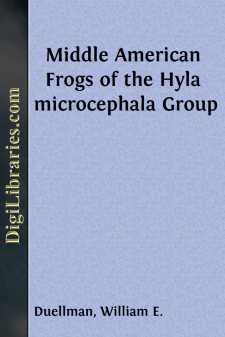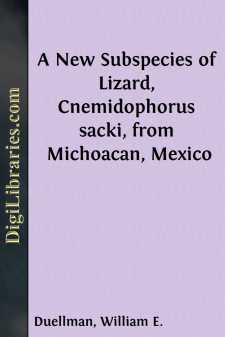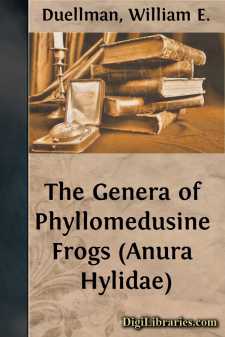Categories
- Antiques & Collectibles 13
- Architecture 36
- Art 48
- Bibles 22
- Biography & Autobiography 813
- Body, Mind & Spirit 142
- Business & Economics 28
- Children's Books 17
- Children's Fiction 14
- Computers 4
- Cooking 94
- Crafts & Hobbies 4
- Drama 346
- Education 46
- Family & Relationships 57
- Fiction 11829
- Games 19
- Gardening 17
- Health & Fitness 34
- History 1377
- House & Home 1
- Humor 147
- Juvenile Fiction 1873
- Juvenile Nonfiction 202
- Language Arts & Disciplines 88
- Law 16
- Literary Collections 686
- Literary Criticism 179
- Mathematics 13
- Medical 41
- Music 40
- Nature 179
- Non-Classifiable 1768
- Performing Arts 7
- Periodicals 1453
- Philosophy 64
- Photography 2
- Poetry 896
- Political Science 203
- Psychology 42
- Reference 154
- Religion 513
- Science 126
- Self-Help 84
- Social Science 81
- Sports & Recreation 34
- Study Aids 3
- Technology & Engineering 59
- Transportation 23
- Travel 463
- True Crime 29
William E. Duellman
William E. Duellman was an eminent American herpetologist known for his extensive research on amphibians and reptiles, particularly in Central and South America. His contributions to the field include significant taxonomic work and the authorship of numerous scholarly articles and books on herpetology. Duellman was a professor at the University of Kansas and curated its herpetology collection, making it one of the most important in the world.
Author's Books:
Sort by:
INTRODUCTION As a part of a study of the herpetofauna of the Mexican state of Michoacán an attempt was made to ascertain the interspecific and intraspecific relationships of the various populations of Pituophis there. Field work in Michoacán revealed that two supposed subspecies of Pituophis deppei were sympatric. This discovery led to the examination of all available (124) museum specimens of these...
more...
INTRODUCTION For almost 30 years North American herpetologists have been making extensive collections of reptiles and amphibians in México. Some parts of the country, because of their accessibility, soon became relatively well known; other regions lying off the beaten path were bypassed or inadequately sampled. Principally in the last decade herpetologists have been entering regions from which no...
more...
INTRODUCTIONThe small yellow tree frogs, Hyla microcephala and its relatives, are among the most frequently heard and commonly collected frogs in the lowlands of southern Mexico and Central America. The similarities in size, proportions, and coloration of the different species have resulted not so much in a multiplicity of specific names, but in differences of opinion on the application of existing...
more...
Top of head and nape dusty brown; tip of rostral and lateral edges of superciliaries dark cream-color; upper labials and sides of head anterior to eyes cream-color, mottled with blue; lower labials and postocular region pale blue; mental, postmental, and sublabials cream-color. Upper surfaces of forelimbs dull bluish gray, spotted with pale greenish yellow; dorsal surfaces of proximal one-fourth of...
more...
THE HYLA BISTINCTA GROUP The five species comprising the Hyla bistincta group are moderate-sized hylids having rather blunt heads and robust bodies. The fingers are long and have little webbing (Fig. 1). The skin of the dorsum is thick and glandular, but not tuberculate. An anal sheath is present. The skull is rather broad, flat, and solidly roofed. The ethmoid is broad, curved downward laterally, and...
more...
Biological exploration of México and Central America has revealed the presence of a diverse fauna, elements of which have undergone speciation in separate areas within the relatively small region. Some genera of amphibians, especially Eleutherodactylus and Hyla, are represented by many species having small geographic ranges in México and Central America. Most of the species of Hyla inhabiting the...
more...
One of the most distinctive phyletic lines among the diverse Neotropical hylid frogs is composed of a group of 40 species placed in the genus Phyllomedusa (Funkhouser, 1957) or in two or three different genera (Goin, 1961; Lutz, 1966). These species differ from all other Neotropical hylids by possessing a vertical, instead of horizontal, pupil. The only other hylids having a vertical pupil belong to...
more...
Field studies on hylid frogs in southern México and northern Central America have resulted in the collection of numerous specimens of Ptychohyla, a genus of hylid frogs heretofore poorly represented in museum collections. Experience with the living frogs in their natural habitats has been helpful in defining the species and in formulating ideas concerning their relationships. Taylor (1944) proposed...
more...


